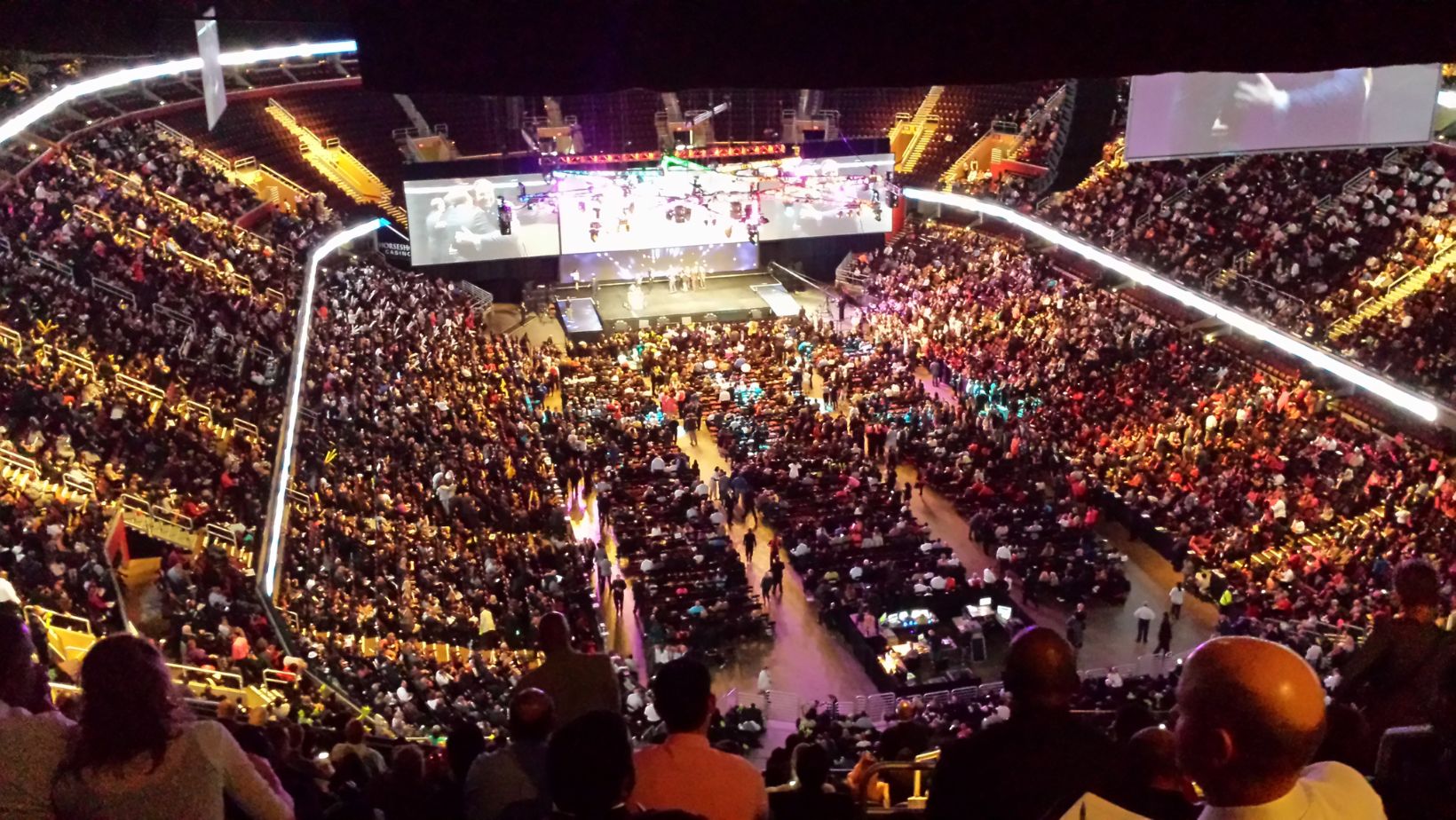Once upon a time, competitive gaming took place in dim basements and computer clubs that smelled suspiciously like energy drinks and teenage ambition. A couple of decades later, esports sell out stadiums that usually host rock stars and NBA finals. Some of these venues helped shape the scene, giving us moments that fans still talk about years later.
So grab your virtual boarding pass. We’re going around the world to visit legendary esports arenas that helped turn gaming into the global beast it is today.
Seoul, South Korea – LoL Park
You can’t talk about esports arenas without bowing toward South Korea. Seoul is where professional gaming stopped being a quirky niche and started looking like a legitimate career path. The country basically raised a generation on StarCraft: Brood War, and it didn’t take long for that to expand to MOBAs and beyond.
The now-closed Yongsan eStadium was once the heart of this movement, full of fans watching legends like Flash and Jaedong. More recently, LoL Park became the purpose-built home of the LCK. It sits right in central Seoul, near Jonggak Station, and feels like stepping into a League of Legends museum crossed with a high-tech arena. From the neon-lit Riot PC Bang and merch-packed Riot Store to the 400-seat circular LCK Arena, it gives you a full-on experience even if there is no game to watch. On game days, expect cheering fans, custom banners, life-sized champion statues, and even a chance to meet the pros after the match.
Los Angeles, USA – The LCS Studio and the Hollywood Shine
Across the Pacific, LA holds the crown as North America’s esports capital. Riot’s LCS Studio in Santa Monica isn’t huge, but it’s where NA League of Legends found its identity. The setup is polished, intimate, and perfect for broadcast, which makes sense, considering it’s in the land of Netflix and Hollywood. What LA lacks in crowd size, it makes up for in influence. Many esports orgs have HQs in the city, and Riot’s operations set the standard for production value.
But LA isn’t all small studios — the Chase Center in nearby San Francisco hosted the 2022 League of Legends World Championship Finals, drawing over 18,000 visitors, with 3.2 million peak viewers online.
LA holds the crown as North America’s esports capital. Riot’s LCS Studio in Santa Monica isn’t big — it only seats around 200 fans — but it’s where North American League of Legends really found its voice. The setup feels polished and personal, almost like you’re sitting in a high-end TV set, which makes total sense given it’s right in the backyard of Netflix and Hollywood. Walking into the studio feels like stepping into a living piece of NA LoL history, with behind-the-scenes energy filling the space. Plus, being so close to the beach doesn’t hurt for a pre-game stroll.
But LA isn’t just cozy studios. The Chase Center in San Francisco, just up the coast, packed over 18,000 fans into a modern arena usually reserved for NBA games during the 2022 League of Legends World Championship Finals. With massive LED setups, booming sound, and space for a big crowd, it shows how esports can feel just as powerful as the biggest traditional sports finals.
Katowice, Poland – Spodek Arena
You wouldn’t expect a city of under 300,000 to host some of the loudest esports moments in history, but Spodek Arena in Katowice begs to differ. Spodek Arena stands out both architecturally and culturally. Its UFO-like design looks spectacular and houses a multi-functional complex that spans nearly 7 hectares. The main arena boasts over 11,000 seats, with 7,776 permanent ones, for massive audiences for various events .
Spodek has a rich history of hosting major sports events and concerts by world-famous artists like Metallica and Pearl Jam. And since 2013, IEM Katowice has been a pilgrimage site for Counter-Strike fans. The 2025 IEM Katowice CS Finals peaked at 1.25 million viewers and packed the arena with fans who cheer like it’s the World Cup.
China – Mercedes-Benz Arena and Hangzhou Esports Town
Shanghai’s Mercedes-Benz Arena sits right on the Huangpu River. This massive, UFO-shaped arena looks like it’s ready to lift off into space. The futuristic design alone makes it worth a visit, but inside, it’s even better: an 18,000-seat bowl with incredible acoustics, enormous LED screens, and lighting setups that can make even a simple player entrance feel like a rock concert. The arena hosted The International 2019, the 2023 LPL Spring Finals, and the 2024 Valorant Champions Tour: Shanghai Masters, bringing in huge crowds for all.
China has also invested heavily in venues like Hangzhou Esports Town, a $280 million project that transformed a district into an esports hub with arenas, training facilities, and hotels built for teams and fans alike. Hangzhou Esports Town has quickly become a key venue for major esports events, hosting the 2023 Asian Games esports competitions, the National Invitation Esports Tournament, the inaugural Asian E-Sports Week in 2024, and the 2025 Overwatch Champions Clash.
The idea was to put esports in the national spotlight. And judging by the millions of Chinese viewers during major tournaments, it worked.
Singapore – The Suntec Convention Centre and the Singapore Indoor Stadium
Until recently, Southeast Asia felt a little left out when it came to massive live events. That changed in 2022, when The International 11 touched down in Singapore. Valve split the tournament across the Suntec Convention Centre and the Singapore Indoor Stadium, letting thousands of fans experience Dota’s biggest stage in person.
The Centre is one of the city’s go-to spots for major esports events. It hosted the 2024 Singapore Esports Festival, where fans gathered to watch top players face off in games like League of Legends and Dota 2. With its central location and massive halls, it’s no surprise that this venue regularly attracts big crowds for esports. Suntec’s layout is perfect for everything from intense esports tournaments to interactive fan experiences.
Just a short drive away, the Singapore Indoor Stadium is another iconic venue that’s no stranger to high-stakes esports action. With its sleek dome roof and futuristic design, it’s hard to miss and even harder to forget once you’re inside. The 12,000-seat arena has a flexible setup perfect for creating an intense, close-up atmosphere during matches. It hosted the International 2022 Dota 2 tournament, pulling in roaring crowds. With the dramatic lighting, top-tier sound system, and sheer size, the Stadium makes every big play feel even bigger.
No Passport Required
Sure, being there in the crowd, watching the lights flash and the casters scream into the mic — that’s the dream. But even if you’re not in Seoul or Katowice, you can still catch the action live, bet smart, and feel the tension of every clutch play.
For those who can’t make it to the arenas but still want to feel the rush, you can visit sportbet.one for global esports action.





